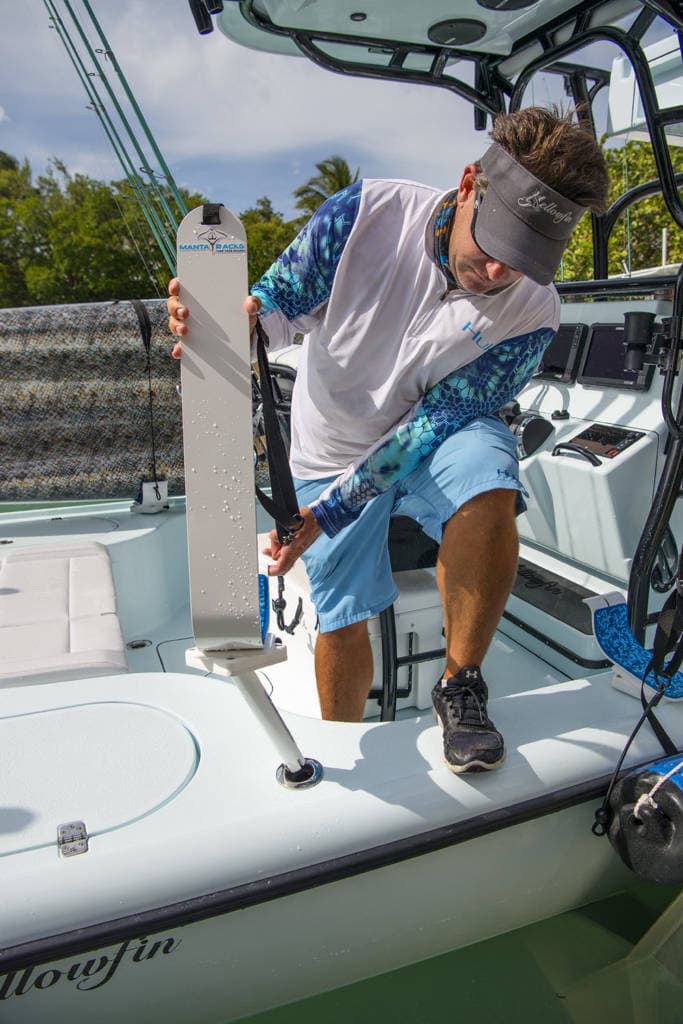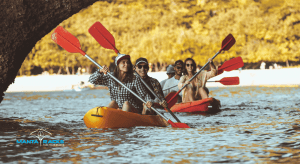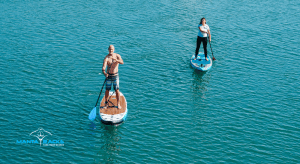I have been asked my opinion on the secret to becoming a successful fishing guide many times. With so many factors, it is tough to pick just one thing that I could point to as the secret to success. In fact, if it is an ingredient to success, it is probably not a secret. It is probably right there in front of everyone, but it is simply a difficult thing to do, requires discipline, dedication, attention to detail or other things that most people find unappealing.
I can credit any success I have enjoyed to things just like I described. Hard work, patience, attention to the small details and making my physical fitness an absolute priority in my day have all had major influence on being successful. Being on time, arriving with my gear dialed in perfectly and always doing what you say are all very important.
One thing that many people neglect is creating the habit of exploring. Equally important to the other things I have listed, exploring new water can be difficult and risky for a working guide and it can also be risky and quite intimidating for the weekend angler who may find himself high and dry in unfamiliar areas. Exploring, however, is a crucial element to continued success in fishing to spread out your fishing pressure and to continue to add to your list of options.
As we encounter challenges like increased fishing pressure, extremely shallow water and no motor zones, the guide and recreational angler have to figure out how to reach the fish both legally or even at all. Kayaks are one solution, but the angler is left to sit only a few feet above the surface of the water or stand in a craft that was definitely not meant for standing. Thanks to Laird Hamilton, big wave surfing expert and serial inventor, we have the Stand Up Paddleboard, or SUP. The SUP started out as nothing more than a large surf board that could be propelled with a long paddle. After getting some traction on the waves, other people started using them for longer paddles. Sooner or later, someone began fishing off of SUP’s and once that happened, an entire industry was born. You can now get SUP’s with rod racks and a host of accessories that make them much better to use as a fishing platform. We even found one that is built like a catamaran boat and is incredibly stable.
Excited about this new platform, we started trying to find some fish near the dock and had minimal success. It was obvious right away that for flats fishing, the SUP was far superior to a kayak or canoe. We were much higher above the water, so we could see much better into the water. The SUP floated in water that was too shallow for a fish to swim so we could go just about anywhere. Soon, we started thinking that we might like to transport these boards to other places that were too shallow for our boats or places where motors are not allowed.
Our first attempt at transporting the boards to a remote area resulted in one of the best days of fishing we have ever had. The SUP allowed us to comfortably travel deeper into the Everglades No Motor Zones than we had ever gone before with no fear of running aground. We could see the fish in the water easily and when we threw a fly to them, they ate with reckless abandon. It was amazing, and FUN, and I knew that I was coming back.
However, when we got back to the dock and began cleaning the boat, we realized that we didn’t come away unscathed. The 30 mile trip across the rough Florida Bay had caused the board to vibrate against the deck of the brand new Yellowfin 24 Bay boat causing damage to the boat in several places and also punched a few holes in the boards themselves. Despite using every life jacket we had in the boat and trying to tie the boards down with dock lines and ratchet straps, the boards still moved a bit and made contact with the boat.
On the second trip we did a better job of securing the boards with a spiderweb of lines. We avoided damage this time, but we could not move anywhere in the boat due to the lines and the boards being inside the boat. This meant that even if we saw the most incredible school of fish on the way, we would not be able to fish for them.
When I saw the Manta Racks at Icast, I knew immediately that I had to have 2 sets. If you don’t know what the Manta Racks are, they are a genius invention that solved a big problem. These are simple racks that can hold a single or double SUP, of many different manufacturers, securely on any boat and be completely removed when not in use. Wondering where the best paddleboarding destinations in Florida are? Find out here!
Discover More About SUPs Here:




